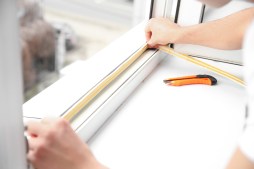Troubleshooting Your Loose Ceiling Fan: What You Can Do Before Calling a Pro
A loose ceiling fan can be both annoying and potentially unsafe. Instead of rushing to call a professional, there are several DIY steps you can take to diagnose and fix the issue yourself. In this article, we’ll guide you through practical solutions to stabilize your ceiling fan and ensure it runs smoothly.
Identify the Symptoms of a Loose Ceiling Fan
Before diving into repairs, it’s important to recognize the signs that your ceiling fan is loose. Common symptoms include wobbling or shaking while running, unusual noises like rattling or squeaking, and visible gaps between the fan’s mounting bracket and the ceiling. Observing these signs helps pinpoint whether the problem is due to installation issues or worn-out parts.
Turn Off Power and Inspect Mounting Hardware
Safety first. Switch off power at the circuit breaker before inspecting your fan. Next, check all mounting screws and brackets that attach the fan to the ceiling box. Over time, these components may loosen from vibrations. Tighten any loose screws with a screwdriver or wrench as needed. If any hardware appears damaged or corroded, replace it with compatible parts from a hardware store.
Balance Your Fan Blades Properly
An unbalanced fan blade can cause wobbling that feels like looseness. To balance blades yourself, clean them thoroughly since dust buildup can affect weight distribution. Use a balancing kit—often including clip weights—to adjust each blade’s balance incrementally until wobbling stops or minimizes significantly.
Check Electrical Box Support
Sometimes a loose ceiling fan results from an improperly supported electrical box inside the ceiling rather than just loose screws outside. This box must be securely fastened either directly to a joist or via a brace designed for fans. If you suspect this is an issue, use caution when inspecting above your fixture; reinforcing or replacing this support might require additional tools.
When It’s Time To Call A Professional
If after tightening screws, balancing blades, and verifying support your fan still feels loose or wobbly, it may indicate deeper mechanical problems such as worn motor bearings or damaged internal components. In such cases, consulting an electrician or experienced handyman ensures safe and effective repairs without risking personal injury.
By following these DIY troubleshooting steps for your loose ceiling fan, you can often resolve common issues quickly and safely on your own — saving time and money in many cases. Remember always prioritize safety by cutting power before working on electrical fixtures.
This text was generated using a large language model, and select text has been reviewed and moderated for purposes such as readability.











